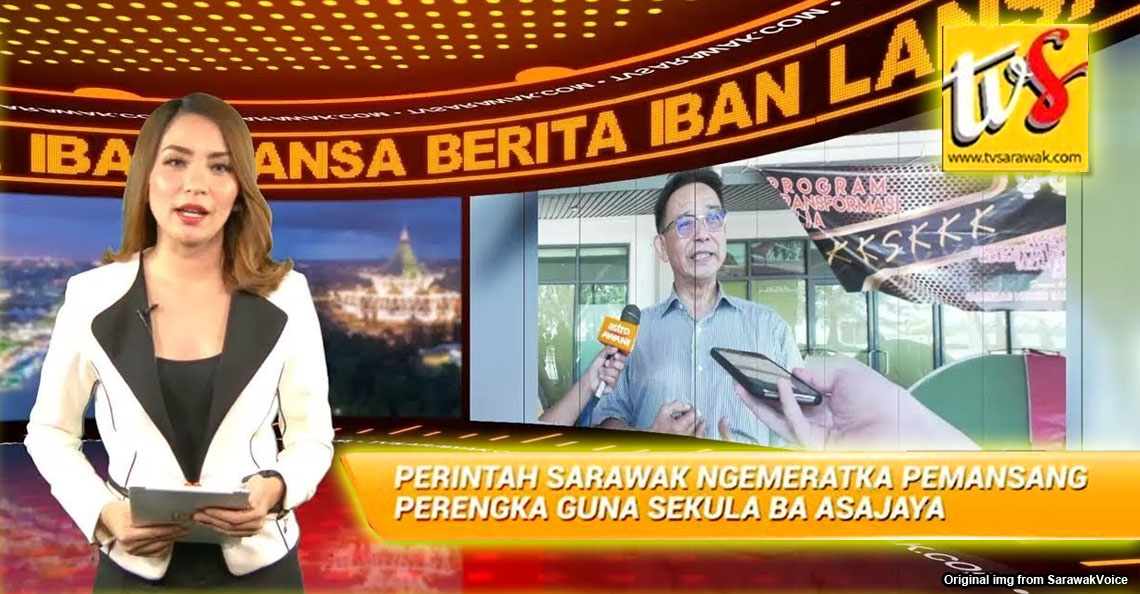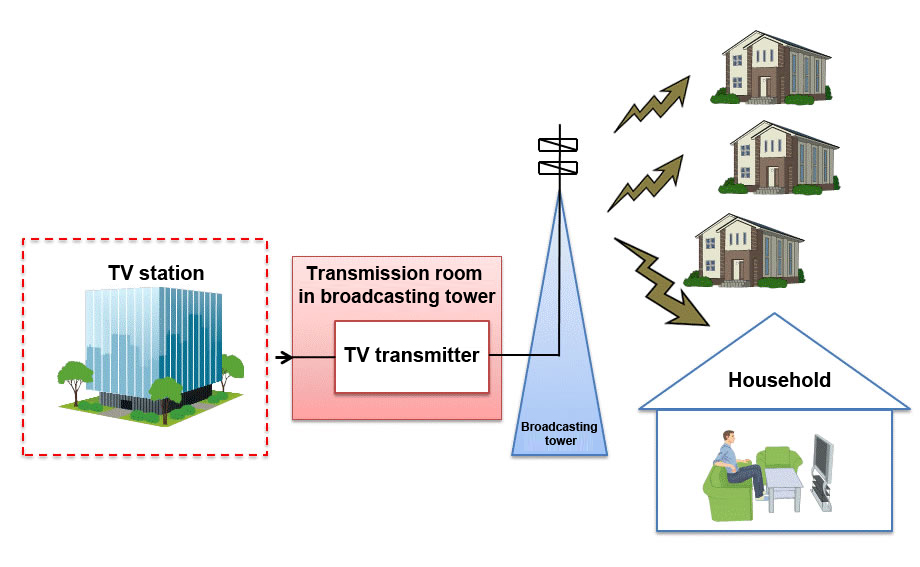How hard is it to start a new TV station in Malaysia? Because Sarawak just did that.

- 829Shares
- Facebook795
- Twitter4
- LinkedIn7
- Email5
- WhatsApp18
If you’re among those in Malaysia who still watch TV regularly, you might have noticed that there’s a new channel… from Sarawak! If you search for channels on your TV after October 10, you can probably find TV Sarawak, Malaysia’s first state-owned television channel. For the past six years, TV Sarawak was an Internet Live TV Streaming Service (like Hulu), and only very recently did it become a free-to-air TV channel, much like RTM and TV3.

As for why Sarawak felt the need to come up with their own TV station, well, based on some news reports, it seemed like some of them feel that Sarawak-centric news had been sidelined by TV stations based in KL. According to Prof Madya Dr Jeniri Amir, a lecturer at Universiti Malaysia Sarawak,
“What happened was important news about Sarawak, especially the state’s major policies and direction, are rarely aired by TV stations based in Kuala Lumpur.” – Prof Madya Dr Jeniri Amir, as reported by Astro Awani.
Anyways, Sarawak Media Group (SMG), the company running the station, had been granted a 10-year license to operate the channel. For now, you can find Sarawak TV on Channel 122 of Astro and NJOI, but the news might got some of us thinking… if Sarawak can start a TV channel… what’s stopping us from starting one?
Well, we’re kinda curious about that, so we looked into the possibilities and found some very interesting stuff. Today’s article will attempt to answer some of the burning questions you might have about starting your own TV channel in Malaysia, starting with a very basic one…
How do you put the little people inside the TV?
Ah, that one simple only. At the TV studios, they use a magical camera that breaks all those people you see in television dramas into millions of tiny pieces. They were then sent through the air to all the televisions across the country, where they will be reassembled into tinier versions of themselves. So if you want to start a TV station, magic cameras are a must.

Okay, okay. How do I really put people on TV?
Well, that’s how we plan to explain it to kids, except you don’t really break the people down into tiny pieces, but rather the video containing them. A video contains both audio and visual data, and to broadcast these, you need to convert them into digital signals, which is the format used for TVs in Malaysia right now. This reduces the video to a bunch of zeroes and ones, which you can now put on radio waves to be sent through the air.
To create radio waves carrying your video, you need a broadcasting tower that can radiate the information to the TVs in the surrounding area. When these waves hit a nearby TV antenna in the area, the TV collects the zeroes and ones and reconstructs them back into the music video, and displays it on the screen. This is basically how TV broadcasts work, and basically every other wireless technology we have, like radio or phones or Wi-Fi.

The difference is the frequency of the waves carrying the signal. Radio stations in Malaysia, for example, use the range between 87.5 and ends at 108.0 Hz (megahertz). For terrestrial TV stations like RTM and TV3, their frequencies are somewhere between 30 to 3,000 MHz, in the VHF (Very High Frequency) and UHF (Ultra High Frequency) range. Satellite TVs like Astro use an even higher frequency, somewhere around 12 GHz (that’s 12,000 MHz).
So if you’re planning to put up a simple TV station in your house or building, you need a mini broadcast tower that can convert your videos into digital signals and broadcast them in the UHF/VHF range. You can actually get those online for under RM100, and these things are sometimes used in electronic stores, to create their own channel so that all their TVs on display show the same thing.

To create an actual TV station, you essentially need better equipment that can broadcast over longer distances. But we don’t recommend doing that for fun, because apparently…
It’s illegal to broadcast TV without a license in Malaysia
TV broadcasting is actually a regulated affair, so without a license, you can potentially get a fine of up to RM500,000 or up to 5 years in jail… or both. Uhh so scurry! So who do I get this license from? Well, anything having to do with radio waves falls under the purview of the MCMC, so we combed their website and called them up for some answers.
Apparently, the license you need for TV broadcasting is called the Content Application Service Provider (CASP) license, and there are two types:
- an individual license, which is generally for nationwide broadcasting (satellite, terrestrial, or subscription TV and radio stations), and
- a class license, which is for more private broadcasting, like within buildings or vehicles, or for one-off events like sports and stuff.
A class license can be pretty confusing, but all you need to do is call MCMC and ask whether your thing is under the class license or not, or read their comprehensive licensing guide here. If your broadcast falls under a class license, you just need to register with MCMC and you’re good to go. Individual licenses, on the other hand, are a whole other story.

Despite the name, you need a company with at least RM500,000 in paid up capital to apply for an individual license. The reasoning behind this, according to the MCMC officer we spoke to, is that running a TV station requires a lot of money, what with hiring talents and getting the rights to shows and whatnot, so having at least that much lessens the chance that your station plonking out within half a year. Because of that, you’d also need to provide MCMC with extensive details on who’s running your company, what kind of facilities and technology you have, and your plans for the station.
The licensing process itself seems pretty expensive, at least to a Maggi-at-the-middle-of-the-month Cilisos writer. For starters, you’d need to pay RM10,000 per license for the application fee. If your application gets through, you’d need to pay another RM50,000 for the approval fee. And that’s just the initial fee for a license. You have to renew it every year, at the rate of RM25,000 per license, plus an annual license fee of either RM50,000 per license, or 0.5% of your gross annual turnover, whichever one is higher.
Not including the initial capital and miscellaneous amounts you need to get copies of the license and stuff, you’re looking at
- RM60,000 to get a license at first, and
- around RM75,000 per year onwards, but you can get rebates for this

But wait, there’s more! Remember how we mentioned earlier that all Malaysian TV channels are now digital? This means that all terrestrial stations are now bundled into the MYTV platform, and you need to pay them a yearly lease depending on your channel’s video quality. Based on 2018 prices, you need to pay
- RM6.7 million a year for standard definition (SD) channels, and
- RM7.4 million a year for high definition (HD) channels
These are just some of the base expenditures. We won’t be talking about the money you’d need for a studio and talents and getting people to watch and all that, because honestly we’re anxious enough as it is. So with all these work and money needed, one might wonder…
Wah so mafan! Is a TV station really worth the effort?
Well, that depends on why you’re starting a TV station in the first place. If you’re planning to profit from it, there are several things to take into account. For one thing, it’s whether you’re choosing to provide free-to-air TV or demand a subscription for your broadcast. Based on statistics so far, it seems the latter is more profitable. In the first half of 2019, the broadcasting revenue for Malaysia was RM2.69 billion, with 85% of that coming from Astro. It should be noted, however, that demanding a subscription alone isn’t enough; many have noted that Astro’s success is due to its content, which it is willing to spend money on.
If you’re planning on providing free-to-air (FTA) TV, you’ll have to depend mainly on advertising to keep your station afloat, which may be hard to do without good content. As with many media industries, TV advertising revenue ties to how many people are watching your channel, with more popular channels getting more advertisers. As of 2019, Media Prima, with its four channels (TV3, NTV7, 8TV and TV9) is the leading FTA broadcaster, commanding 35.2% of the audience market share.

The remaining viewers were split among 10 other channels, with RTM‘s channels getting 8.4% of the audience. While we can’t find the current revenue for both these companies, their combined revenues from both their TV and radio stations in 2009 kind of reflected this: where RTM earned RM66 million, Media Prima‘s revenue reached RM0.74 billion. So there’s competition to think about as well.
However, if you’re not thinking of profits, having a niche TV station might be a fulfilling venture. For TV Sarawak, which is owned by the state, the money needed to start a station may not the that much compared to the benefits they hope to get from it. As said by Sarawak’s Chief Minister Datuk Patinggi Abang Johari,
“TVS is the first state-owned television station in the country and will be the platform for Sarawak’s content creators, producers and performers to showcase their work, while becoming an effective medium for communication through their news bulletins, current affairs programmes and talk shows of all kinds. I hope this (launching of TVS) will open more doors for Sarawak to make a mark in every part of the world,” – Datuk Patinggi Abang Johari Tun Openg, as reported by Malay Mail.
So… if you have money laying around and wanted to broadcast stuff, go nuts, we guess.
- 829Shares
- Facebook795
- Twitter4
- LinkedIn7
- Email5
- WhatsApp18



